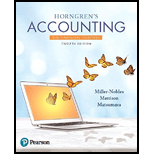
Cash Ratio: A ratio that reflects the ability to pay current liabilities by cash and cash equivalents is called cash ratio. It is useful to evaluate the cash available as cash is an important factor for day to day operations for any business.
Inventory Turnover: It is a part of efficiency ratios used during the process of ratio analysis. It reflects the number of times a company’s inventory is converted into sale during a particular period. The cost of goods sold is divided by average inventory to get the value of inventory turnover.
Gross Profit Percentage: Also known as gross margin percentage, this ratio evaluates the profitability of each dollar of sale. Gross profit is the excess of revenue over cost of goods sold so companies are very keen to have a higher gross profit percentage. It enables them to cover the operating expenses related to business.
Debt Ratio: It is the ratio between total assets of the company and the total liabilities. Debt ratio reflects the finance strategy of the company. It is used to evaluate company’s ability to pay its debts. Higher debt ratio implies the higher financial risk.
Debt to Equity Ratio: This ratio reflects the relationship of company’s total liabilities to total equity. It is used to measure financial leverage. Higher debt to equity ratio means that the company has financed its assets by debts more than the owner’s capital.
Profit Margin Ratio: Profit margin ratio reflects the portion of net income in the net sales. It is a profitability measure tool that is used to evaluate the net income a business earns on every dollar of net sales. It is computed as net income divided by net revenue.
Asset Turnover Ratio: It is the extended form of
Rate of Return on Common
Earnings per Share: It is a mandatory term to be reported with the financials of a company in the annual report. It reflects the amount earned or lost on each outstanding common equity share. It is widely used to evaluate the performance of a business.
Price/Earnings Ratio: It depicts the relation of market price of a share to earnings per share of that company. The price/earnings ratio shows the market value of the amount invested to earn $1 by a company. It is major tool to be used by investors before the decisions related to investments in a company.
Dividend Yield: Dividend yield is the tool to reflect the annual dividend paid to investors. It measure the per share dividend received by shareholders.
Dividend Payout: After the calculation of earnings per share, companies declare the amount to be paid to common shareholders out of those earnings. This portion of earnings per share declared to be paid as dividends is measure by dividend payout ratio. It is reflected as in percentage of earnings per share.
1.
a.
To compute: The current ratio for company P and R for 2018 and 2019.
b.
To compute: The cash ratio for Company P and R for 2018 and 2019.
c.
To compute: The inventory turnover for Company P and R for 2018 and 2019.
d.
To compute: The accounts receivable turnover for Company P and R for 2018 and 2019.
e.
To
To compute: The gross profit percentage for Company P and R for 2018 and 2019.
f.
To compute: The debt ratio for Company P and R for 2018 and 2019.
g.
To compute: The debt to equity ratio for Company P and R for 2018 and 2019.
h.
To compute: The profit margin ratio for Company P and R for 2018 and 2019.
i.
To compute: The asset turnover ratio for Company P and R for 2018 and 2019.
j.
To compute: The rate of return on common stockholders’ equity for Company P and R for 2018 and 2019.
k.
To compute: The earnings per share for Company P and R for 2018 and 2019.
l.
To compute: The price/earnings ratio for Company P and R for 2018 and 2019.
m.
To compute: The dividend yield for Company P and R for 2018 and 2019.
n.
To compute: The dividend payout for Company P and R for 2018 and 2019.
2.
To evaluate: The stock of Company P and R for investment.
Trending nowThis is a popular solution!

Chapter 17 Solutions
Horngren's Accounting, The Financial Chapters (12th Edition)

 AccountingAccountingISBN:9781337272094Author:WARREN, Carl S., Reeve, James M., Duchac, Jonathan E.Publisher:Cengage Learning,
AccountingAccountingISBN:9781337272094Author:WARREN, Carl S., Reeve, James M., Duchac, Jonathan E.Publisher:Cengage Learning, Accounting Information SystemsAccountingISBN:9781337619202Author:Hall, James A.Publisher:Cengage Learning,
Accounting Information SystemsAccountingISBN:9781337619202Author:Hall, James A.Publisher:Cengage Learning, Horngren's Cost Accounting: A Managerial Emphasis...AccountingISBN:9780134475585Author:Srikant M. Datar, Madhav V. RajanPublisher:PEARSON
Horngren's Cost Accounting: A Managerial Emphasis...AccountingISBN:9780134475585Author:Srikant M. Datar, Madhav V. RajanPublisher:PEARSON Intermediate AccountingAccountingISBN:9781259722660Author:J. David Spiceland, Mark W. Nelson, Wayne M ThomasPublisher:McGraw-Hill Education
Intermediate AccountingAccountingISBN:9781259722660Author:J. David Spiceland, Mark W. Nelson, Wayne M ThomasPublisher:McGraw-Hill Education Financial and Managerial AccountingAccountingISBN:9781259726705Author:John J Wild, Ken W. Shaw, Barbara Chiappetta Fundamental Accounting PrinciplesPublisher:McGraw-Hill Education
Financial and Managerial AccountingAccountingISBN:9781259726705Author:John J Wild, Ken W. Shaw, Barbara Chiappetta Fundamental Accounting PrinciplesPublisher:McGraw-Hill Education





